All about ANA Super Flyers Card - the credit card with the best travel benefit in the world

Chances are you have taken a plane before. You may have looked at some travel credit cards, flown Economy to all your destinations, trying to ignore the flyers in the higher classes. However, Japan is home to the credit card with the best travel benefit in the world - the ANA Super Flyers Card.
An ANA Super Flyers Card is a must have for anyone who enjoys flying. In this post, I’ll talk about what it is, its benefits, and how to get one efficiently.
What is ANA Super Flyers Card?
ANA Super Flyers Card (SFC) is a card that grants the cardholder similar benefits to that of an elite member of the ANA Mileage Club, which is ANA’s frequent flyer program. Since the SFC is a credit card, you gain the benefits as long as you have keep the credit card by paying the annual fee. Of course, since this card offers special benefits, you can’t just simply apply for it like other credit cards - you need to be a Platinum or Diamond member of the ANA Mileage Club.
ANA Super Flyers Cards
| Type | Visa / Master / JCB | AMEX | Diners Club |
|---|---|---|---|
| General | 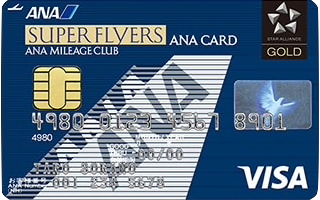 |
||
| Gold |  |
 |
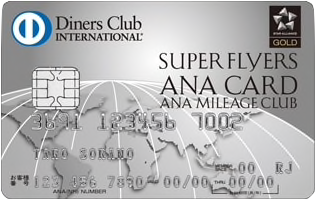 |
| Premium | 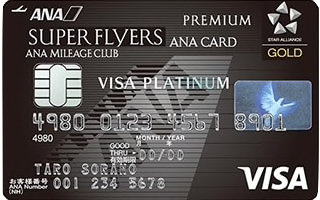 |
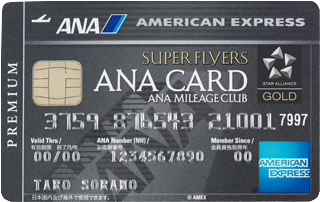 |
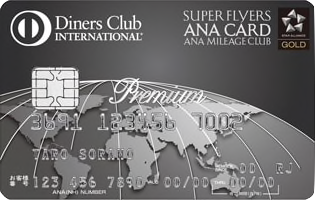 |
The process of acquiring your own SFC requires time and money, and it is comparable to training. This is why the process of working hard to get your own SFC is called SFC Training.
ANA Mileage Club and Elite Membership
ANA Mileage Club is ANA’s frequent flyer program. Whenever you take a flight on ANA or one of their partner airlines, you can earn points called Premium Points (PP). ANA’s membership level depends on how many premium points you earn in a year.
| Membership Level | Premium Points / Year |
|---|---|
| General | 0 |
| Bronze | 30,000 |
| Platinum | 50,000 |
| Diamond | 100,000 |
The more Premium Points you earn in a year, the higher your membership status becomes. However, there are 2 major cons:
- Your Premium Points reset to 0 at the end of every calendar year.
- When you achieve an elite membership level above General, it is only valid from the start of the next fiscal year(April) until the end of that fiscal year(March).
So, even if you work really hard and achieve an elite status, you can only keep it for 1 year, so you might be wondering if it is worth it.
However, there is actually a way to keep your membership. This is by having an SFC mentioned above. If you’re Platinum or Diamond status, you can apply for an SFC. While you have an SFC, you can enjoy similar benefits to that of a Platinum member. Here’s a list of benefits you can get for each membership level and SFC.
Benefits by ANA membership level
| Benefit | Bronze | Platinum | Diamond | SFC |
|---|---|---|---|---|
| Premium Member Service Desk | ✔ | ✔ | ✔ | ✔ |
| ANA LOUNGE access | ✔ | ✔ | ✔ | |
| ANA SUITE LOUNGE access | ✔ | |||
| Concierge Service | ✔ | |||
| ANA Upgrade Seat Awards | ✔ | ✔ | ✔ | ✔ |
| Domestic advance reservation | ✔ | ✔ | ✔ | ✔ |
| Domestic seat reservation priority | ✔ | ✔ | ✔ | ✔ |
| Free international seat reservation | ✔ | ✔ | ||
| Prioritized Reservation Waiting List | ✔ | ✔ | ✔ | ✔ |
| Early reservations for domestic award tickets | ✔ | ✔ | ✔ | ✔ |
| Waitlist reservations for domestic award tickets | ✔ | |||
| Priority reservations for international award tickets and upgrades | ✔ | ✔ | ✔ | |
| Waived international service charges | ✔ | |||
| Star Alliance Status | Silver | Gold | Gold | Gold |
| Priority Check-in | Premium Economy | ✔ | ✔ | ✔ |
| Priority Baggage Claim | ✔ | ✔ | ✔ | |
| Additional free baggage | International only | ✔ | ✔ | ✔ |
| Exclusive Security Check Point | ✔ | ✔ | ✔ | |
| Priority boarding | ✔ | ✔ | ✔ | |
| Priority airport standby | ✔ | ✔ | ✔ | ✔ |
| Free valet parking (Narita) | ✔ | ✔ | ✔ | |
| Priority parking (Haneda) | ✔ | ✔ | ✔ | |
| Frequent Visitor e-channels (Hong Kong) | ✔ | ✔ | ✔ | ✔ |
| Upgrade Points | ✔ | ✔ | ✔ | ✔ |
| Flight bonus miles | 40-55% | 90-105% | 115-130% | 35-50% |
| Renewal Bonus Miles | ✔ | ✔ | ✔ | |
| No Mileage Expiry | ✔ | |||
| Special ANA SKY COIN conversion rate | ✔ | ✔ | ✔ | ✔ |
| Convert Upgrade Points to ANA SKY COIN | ✔ | ✔ | ✔ | ✔ |
| IHG ANA Hotels Group Japan discount | ✔ | ✔ | ✔ | |
| Free ATM withdrawals with ANA Mileage Club Financial Pass Visa Debit Card | ✔ | ✔ | ✔ | |
| Original name tag | ✔ | ✔ | ||
| Exclusive name tag and baggage tag for members with over 150,000 PP | ✔ | |||
| ANA SUITE LOUNGE voucher with over 80,000 PP | ✔ | |||
| Diamond Exclusive Benefits | ✔ | |||
| ANA Selection for Premium Members | ✔ | ✔ | ✔ | ✔ |
| Lifestyle Magazine | ✔ | ✔ | ✔ | |
| Diary & Calendar Gifts | ✔ | ✔ | ✔ |
By the way, the SFC benefits are linked to having the credit card, and since it is a credit card, you can issue supplementary cards. This means that you can also give your family SFC benefits by issuing a supplementary card to them.
Star Alliance Status
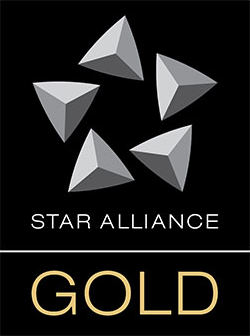
There is one benefit that particularly stands out, and I bolded it in the table above. It is Star Alliance Status. Here is the row again:
| Benefit | Bronze | Platinum | Diamond | SFC |
|---|---|---|---|---|
| Star Alliance Status | Silver | Gold | Gold | Gold |
SFC membership grants you Star Alliance Gold. If you travel internationally, this is without a doubt the best benefit of having an SFC. Star Alliance is the largest airline alliance in the world, consisting of the following airlines.
Star Alliance Members
- Aegean Airlines
- Air Canada
- Air China
- Air India
- Air New Zealand
- ANA
- Asiana Airlines
- Austrian Airlines
- Avianca
- Brussels Airlines
- Copa Airlines
- Croatia Airlines
- EgyptAir
- Ethiopian Airlines
- EVA Air
- LOT Polish Airlines
- Lufthansa
- Scandinavian Airlines
- Shenzhen Airlines
- Singapore Airlines
- South African Airways
- Swiss International Air Lines
- TAP Air Portugal
- Thai Airways
- Turkish Airlines
- United Airlines
Each airline’s frequent flyer program membership level also corresponds to a Star Alliance status level. Star Alliance has 2 elite statuses - silver and gold, and they grant you many benefits when taking any airline in Star Alliance. Star Alliance Silver does not have many benefits, but Star Alliance Gold is where the benefits are plentiful. These benefits include, but are not limited to:
- Priority airport check-in
- Priority baggage handling
- Airport lounge access for you and a guest
- Priority boarding
- Extra baggage allowance
- Priority lane for airport security
- Priority reservations waitlist
- Priority airport standby
You can find the complete details on the Star Alliance Website.
ANA is the only airline in Star Alliance that offers semi-permanent Star Alliance Gold.
How to get an SFC
Before continuing, I want mention the first requirement of getting an SFC separately. You must be a resident of Japan. SFC is a credit card, so naturally it requires a credit check. In order to even be eligible for a credit check, you need to live in Japan.
The major requirement of getting an SFC is reaching Platinum or Diamond membership. Since Platinum is lower than Diamond, you only need to reach Platinum. To become a Platinum member, you need to have 50,000 PP. Once you reach Platinum status, you request an application from ANA, and the rest is a standard credit card application process.
So, how can you efficiently get 50,000 PP in 1 calendar year? This process is called SFC Training.
How to earn PP
PP is points that can only be earned by taking paid flights on any airline in Star Alliance. The flights must be purchased, so award tickets will give you 0 PP. Half of the 50,000 PP requirement (25,000 PP) must be earned on ANA flights. In the case of codeshare flights, the flight must be operated by ANA.
Generally, the farther you go and the higher ticket class you purchase, the more PP you earn. There is also an extra multiplier on the PP earned, which is 2x on ANA domestic flights, 1.5x on ANA flights to/from Asia and Oceania, and 1x for everything else.
The most popular ticket to book for SFC Training purposes is Domestic Premium Class. Of course, if you have lots of time and money, you can fly as much as you like and earn 50,000 PP, though I wouldn’t call it “training” for those people. I’m envious of those kinds of people.
For the rest of us, earning 50,000 PP is a game of optimization and trade-offs. You want to find a ratio of time and money that you are happy with, but also may want to go to various destinations to enjoy yourself. You may also only want to fly on weekends and holidays to minimize your use of vacation days. If you fly often enough, it is possible to earn all 50,000 PP within 1 month, but you can definitely spread out your flights throughout the year.
The cost of SFC training is between 300,000¥ and 700,000¥, with the most common cost being between 500,000¥ and 600,000¥.
¥ / PP ratio
The cost of each PP in Yen is the usual unit of measurement when it comes to SFC training. This can be calculated by dividing the fare price by the PP acquired from the flight.
Lower ratio is better. Efficient SFC training tends to target a ratio of less than 10¥ / PP. Thus, the typical cost is derived from 50,000 PP * 10¥ / PP = 500,000¥.
SFC Training Routes
There are numerous flight routes that can be used for SFC training. These are the routes that are the most popular.
Tokyo ⟷ Okinawa

The overwhelmingly most popular route is round trips between Tokyo (Haneda) and Okinawa (Naha).
In the extreme case, you can reach 50,000 PP using only round trips between Haneda (HND) and Naha (OKA). The PP you can get and the required round trips are:
| Ticket Class | PP Earned (One way) | PP Earned (Round trip) | Required Round Trips |
|---|---|---|---|
| Premium Class | 2860 | 5720 | 9 (51,480 PP) |
| Economy | 1476 | 2953 | 17 (50,184 PP) |
If you use Premium Class, if you do a HND ⟷ OKA round trip once a month, if you start SFC training in January, you can finish it in September. Of course, this kind of schedule can be very rough unless you really like Okinawa.
SIN Touch

Another popular route is known as the SIN Touch. The Singapore (SIN) Touch involves a round trip between Okinawa (OKA) and Singapore (SIN). It’s also given the name “Touch” because it’s just a “touch” of Singapore.
ANA does not have a direct flight from Okinawa to Singapore. So, when you book a round trip, the flight actually does like this:
Okinawa → Tokyo (Haneda / Narita) → Singapore → Tokyo (Haneda / Narita) → Okinawa
As you can see, the trip starts and ends with Okinawa. So if you live in Tokyo, you can add on a Tokyo ⟷ Okinawa round trip as described above. When you add that on, you may have a schedule that looks like this:
| Flight | Departure Time | Arrival Time |
|---|---|---|
| Tokyo → Okinawa | Friday evening | Friday evening |
| Okinawa → Tokyo | Friday evening | Friday late night |
| Tokyo → Singapore | Saturday morning | Saturday afternoon / evening |
| Singapore → Tokyo | Saturday late night | Sunday morning |
| Tokyo → Okinawa | Sunday afternoon | Sunday afternoon / evening |
| Okinawa → Tokyo | Sunday evening | Sunday late night |
This is just an example, which is also possible to do in just one weekend, so you can do it without using a vacation day.
By the way, Okinawa is added on as the second point of the round trip because it adds an extra round trip between Haneda and Okinawa for around 10,000¥, even for Premium Economy. PP earned from that extra HND ⟷ OKA round trip is dependent on the ticket class.
| Ticket Class | PP Earned (One way) | PP Earned (Round trip) |
|---|---|---|
| Y / B / M (Premium Economy) | 1968 | 3936 |
| U / H / Q (Economy) | 1377 | 2754 |
| V / W / S (Value Economy) | 984 | 1968 |
Which ticket class you use is up to you, but it’s possible to earn more than 10,000 PP with this route, before including the additional HND ⟷ OKA round trip. With this route, you can get a ¥ / PP ratio of 8¥ / PP.
Overseas Tickets
Overseas Tickets are international round trip tickets that have the international destination as the start/end point. For example, a round trip consisting of:
- Tokyo → Singapore
- Singapore → Tokyo
The overseas tickets version would be:
- Singapore → Tokyo
- Tokyo → Singapore
Of course, this means that you need to book your tickets to get to Singapore in the first place separately, but sometimes, overseas tickets are cheaper. Keep this in mind if you plan to go overseas to the same destination more than once for SFC training.
Some other international destinations used for SFC training:
- Kuala Lumpur
- Bangkok
- Ho Chi Minh City
- Sydney
Tips for successful SFC Training
SFC Training is a big commitment and you want to make sure you get the best value from it. Here are some tips for maximizing the value and ensuring a smooth training process.
If you never had a Japanese ANA card, sign up for ANA My Friend Program before getting one
First things first, if you don’t have an ANA card, sign up for ANA My Friend Program (マイ友プログラム), then sign up for an ANA card. If you sign up for ANA My Friend Program (Japanese only), you and a friend can get bonus miles when you issue an ANA card.
The number of miles you get depends on the card type issued, but you can only get it once, so if you plan to issue multiple cards, make sure you issue the highest level one first!
| Card Type | Bonus Miles |
|---|---|
| ANA Card | 1000 |
| ANA Wide Card | 2000 |
| ANA Gold Card | 2000 |
| ANA Premium Card | 10000 |
To sign up for the ANA My Friend Program, go to the page and click the button that says 登録用ページ. From there, you can enter a referral’s details and your own information. If you need someone’s details to enter, feel free to use mine:
| Field | Value |
|---|---|
| 紹介者氏名(姓) | ラウ |
| 紹介者氏名(名) | デイラン |
| 紹介番号 | 00076715 |
Get the right credit card(s) before booking flights
Before booking any flights, you should get 1 or 2 credit cards to satisfy the following conditions:
- Can be switched to an SFC equivalent
- Signup bonus with large minimum spend
Both of the conditions are not mandatory, but highly recommended.
Starting with the first condition: Can be switched to an SFC equivalent. Since SFC is a credit card, it requires a credit check. This also means that even if you reach 50,000 PP, if you fail the credit check, you cannot get your SFC. You do not want to be in this situation.
If you get a credit card that has an SFC equivalent, you can switch your card to the SFC equivalent without a credit check. This eliminates the risk of failing a credit check. Also, you can freely switch your brand of SFC after getting one.
Credit cards with SFC equivalents
| Type | Visa / Master / JCB | AMEX | Diners Club |
|---|---|---|---|
| General | 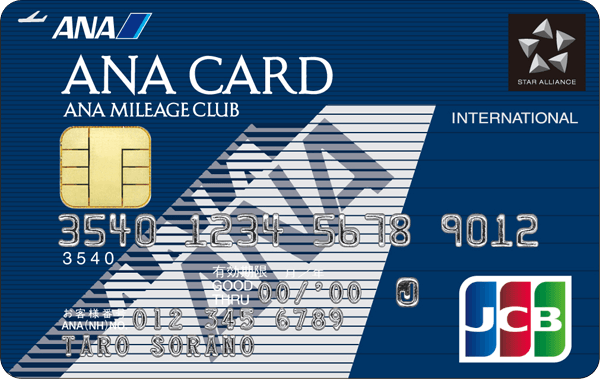 |
||
| Gold | 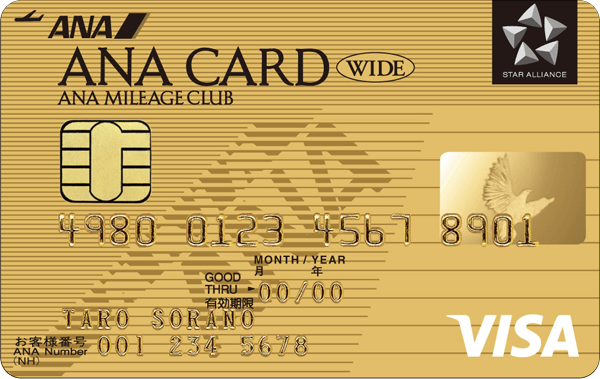 |
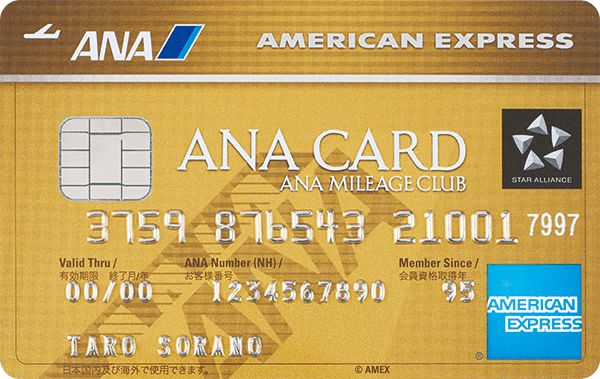 |
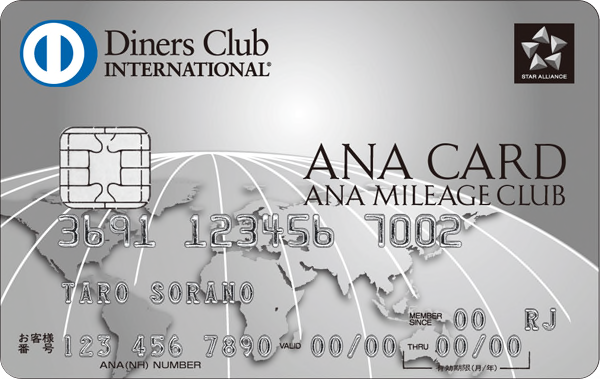 |
| Premium | 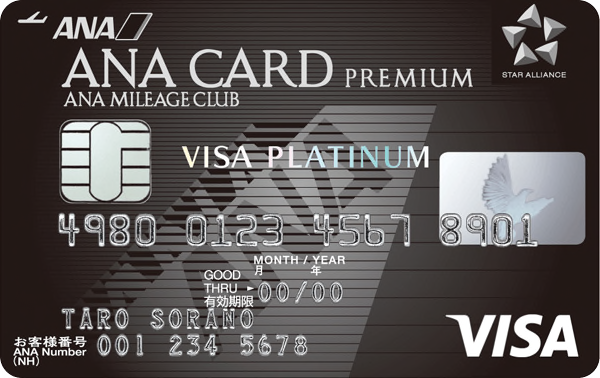 |
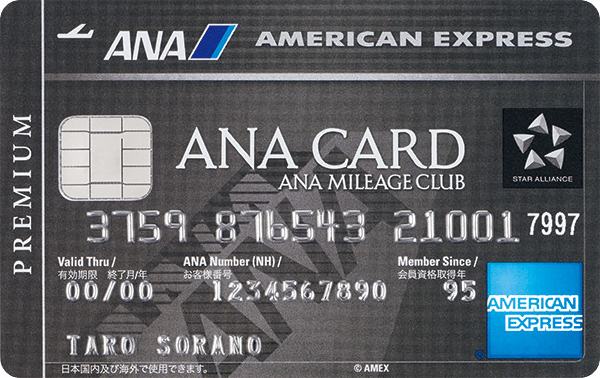 |
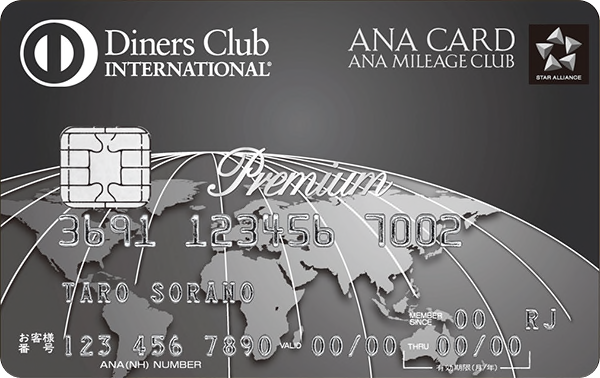 |
The second condition is Signup bonus with large minimum spend. First, I’d like to give a primer on churning. Simply put, churning is the process of signing up for credit cards with large signup bonuses in the form of miles, points, or cash back, meeting the requirements of the bonus, and then cancelling the card. It’s a way of maximizing credit card rewards.
Usually the bonuses require spending some amount of money within a short time. Since you will be purchasing a lot of flights, you should get a card to maximize the return you can get from those purchases. Unfortunately, signup bonuses are relatively rare in Japan, so there aren’t many cards you can choose from. Most of the cards with signup bonuses are Amex.
By the way, if you have a churning hobby, if you have access to US credit cards, I recommend you stick with those cards for churning purposes.
There’s 2 recommended cards a bit further down.
Start planning early
When you begin training, it is very important to make a rough plan. You should make a budget, think about where you want to go and what dates you can fly.
The process involves taking a lot of flights, so make sure you plan your schedule carefully. Even if you find a date with a cheap fare, you may need to adjust your schedule so you can take the flight. At peak times, the most efficient fares sell out fast. Schedule your flights early so you can get the fares you want.
Use Domestic Premium Class at least once
Domestic Premium Class offers first class services that are similar to what you can get after you get your SFC.
This includes priority check-in, security, boarding, lounge access and baggage claim. Being able to experience it early may help motivate you.
By the way, if you have never used an airport lounge before, I highly recommend that you do so. After many years of waiting for flights by the gate, being able to relax in a lounge was a game changer for me.
Take care of yourself and enjoy!
This is the most important part. Don’t push yourself too hard to get your SFC. Visit the most popular sightseeing spots wherever you go, and go to the events that interest you. Also, watch your health during the process. You don’t want to get sick during training.
Enjoy flying. Enjoy your trip.
Bonus: Credit Cards
Here’s a quick summary about the credit cards you want to get before training. As a reminder, here’s the 2 conditions you want to satisfy with your credit cards.
- Can be switched to an SFC equivalent
- Signup bonus with large minimum spend
Signup bonuses change all the time and this post may not reflect ongoing campaigns, so do your research for deciding on a card with a signup bonus.
ANA Gold Amex - satisfy both conditions with 1 card!
There’s actually one card that satisfies both conditions on its own. It is the ANA Amex Gold.

This card has an SFC equivalent so it can be switched without a credit check. Also, if you’re a foreigner, Amex cards are relatively easy to get, even though this is a gold card.
The annual fee is 34,100¥ but comes with plenty of benefits since it’s an Amex. It earns 1 mile per 100¥, but when booking flights on ANA, it gives 3 miles per 100¥. Also, your miles are stored as Amex Membership Rewards, so they don’t expire.
If you get a referral to this card, when you spend 1,000,000¥ within 3 months, you can get up to 70,000 ANA miles. You might think that the spend requirement is high, but remember you need to spend a lot of money to book the flights anyway. Also, in the low season, a Tokyo ⟷ New York round trip is 75,000 miles.
If you need a referral link, please contact me by email and I will give you a link within a few hours!
ANA Wide Gold - switchable card with excellent cost performance
This card has the best cost performance out of all the cards.

This card has an SFC equivalent and can be converted without a credit check. It is issued by SMBC and is a bit harder to get than the Amex if you’re a foreigner.
Normally, the annual fee is 15,400¥ and it gives 1 mile per 100¥, but if you use online statements, set up revolving payments and use more than 1,000,000¥ per year with the card, the annual fee becomes 10,450¥ (Visa only) and you can get up to 1.648 miles per 100¥.
Your points get stored as World Present points, which expire after 3 years, so combining that with ANA miles expiring after 3 years gives your miles a total expiry of 6 years.
Unfortunately, starting in 2021, the bonus for at least 1,000,000¥ per year will be removed and the max miles you can get per 100¥ becomes 1.348 miles. This card also does not have an initial spending bonus. All things considered though, it is still an excellent card and worth considering.
If you prefer Japan Airlines and Oneworld
If you prefer using Japan Airlines (JAL) or Oneworld alliance’s airlines for your flights, JAL has a special card called JAL Global Club (JGC) which is more or less then same as SFC. The main difference is that the elite status requirement is slightly easier to obtain, and the benefits are for Oneworld instead of Star Alliance.
There’s a few other differences that I can cover in another post, but overall everything in this post has a JGC equivalent.
Summary
SFC training is highly recommended. It is something you can only get while living in Japan, and any flyer outside of Japan would love to get this card. I completed SFC training myself in 2020 which involves 7 HND ⟷ OKA round trips in Premium Economy and 3 HND ⟷ OKA round trips in Economy. It was on the more expensive side because I made the decision on a whim in January but I’m still glad I did it. With a proper time and money investment, you too can have your very own SFC and share the benefits with your family for many years to come.